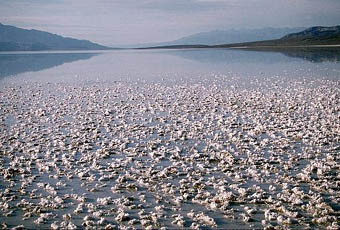22 Rocks and Rock Cycle (II): Sedimentary Rocks

Figure 1. The White House of the USA is made of a sedimentary rock called sandstone.
3D View on sedimentary rocks outcrop in Hong Kong:
https://sketchfab.com/3d-models/laminated-rocks-hong-kong-e536261042834170b7f5467407bca001
3D View on Seismites (Seismites are sedimentary beds and structures deformed by seismic shaking) in Israel (Dead Sea):
Lithification—Sediments to Sedimentary rocks
Sedimentary rocks are made of lithified (i.e. converted to rock) sediments. Lithification is a conversion of loose sediments into solid rocks.
Sediments are grains (or clasts) of rocks, minerals, or mineraloids deposited on the surface of the earth.
Reflect on the rock cycle for an indication of the relationships between the rocks that erode to become sediments and sedimentary rocks.
Can igneous rocks become a sediment? Can metamorphic rocks become a sediment? Can sedimentary rocks become a sediment?
Clastic sedimentary rocks (rocks consisting of distinct separate but cemented particles) are the result of weathering (breaking source rocks apart by the temperature and vegetation on the earth surface) and erosion of source rocks (by ice, water, wind, etc.), which turns them into pieces—clasts—of rocks and minerals. Once they become pieces, these clasts are free to move away from their source rock and they usually do. During the erosion they are most often transported by water or wind and deposited as layers of sediment. Then sediments experience deposition and rest.
The burial stage of lithification involves the deposition of more sediment layers top of those that had been deposited earlier. In a sedimentary basin where sediment is being deposited, it is common for subsidence (lowering) of the basin to be taking place, either because the crust and lithosphere beneath it are subsiding into the mantle to some extent, or because the surrounding uplands are undergoing uplift relative to the basin, or both. This allows thousands of feet of burial, in some cases tens of thousands of feet of burial, to occur.
As sediments are buried, the weight of overlying material exerts pressure, causing compaction of the sediments. The pressure, known as lithostatic pressure, “squeezes” the sediments from all sides into a smaller volume. Lithostatic pressure packs the sediment grains closer together and reduces the porosity – space between the sediment grains. With time clasts get cemented by various matter. This is when sediments get lithified.
Some sedimentary rocks becomes rocks by crystallization of minerals from substances dissolved in water, at the earth’s surface. Examples include rock salt and other evaporite deposits (e.g. gypsum). These sediments form sedimentary rock without having to undergo burial and compaction. We call these rocks chemical. Minerals in chemical sedimentary rocks precipitate from water and usually remain in place or are not transported far before lithification. Such mineral sediments are subjected to little, if any, erosion and transportation.
During burial and compaction, sediments will undergo some amount of cementation. Cementation refers to the growth of new minerals between the sediment grains. These new minerals bind the sediment grains together. One form of cementation is growth of quartz rims on the surfaces of pre-existing quartz grains in the sediment. This new mineral growth is a result of water in the pore spaces that dissolves and precipitates quartz. A second common cementing mineral is hematite, a red or rust-colored iron oxide mineral, which precipitates onto the sediment grains from a combination of dissolved iron and oxygen from water in the pore spaces. A third common cementing mineral is calcite, which also precipitates from ions dissolved in the water in the pore spaces during lithification. Although there are other cementing minerals, quartz, hematite, and calcite are common cementing minerals that grow between or on the surfaces of the original sedimentary grains.
Generalized steps from source to sedimentary rock:
weathering >> erosion >> transport >> deposition >> burial >> compaction >> cementation >> sedimentary rock
This long process is called diagenesis, i.e. the process of formation of sedimentary rocks from the weathered material (can be any other rock).
Any type of rock containing any type of mineral will undergo weathering and erosion at the earth’s surface. However, some minerals are more stable than others in earth’s surface environments and are more likely to be found in sedimentary rocks.
Minerals in Sedimentary Rocks Formation
Grains of clastic sediment, which are called clasts are modified during the weathering-to-deposition process. Weathering of minerals will gradually eliminate the physically weaker and chemically more reactive minerals, increasing the relative abundance of more resistant minerals. Quartz tends to become increasingly abundant during the process, due to its common occurrence in the source rocks combined with its hardness and lack of cleavage, which makes it resistant to breaking down physically. Quartz is not easily dissolved or chemically altered, so it is resistant to breakdown by chemical reactions as well. That is why beach sand is often more rich in quartz than any other mineral. Sediments rich in quartz are considered mineralogically “mature” because they have been subjected to a longer interval of physical and chemical modification during the erosion-to-deposition process. Mature sediments are deposited farther from their source rocks in space and/or time than immature sediments (i.e. sediments that did not experience heavy weathering and chemical/mineral modification).
Feldspars are the most common type of mineral in earth’s crust and are also abundant in many clastic sediments and sedimentary rocks. Although feldspar is a fairly hard mineral, it does cleave (split apart) and is chemically reactive, especially in the presence of water. The most abundant product of chemical reaction of feldspar and water is clay minerals. During the erosion-to-deposition process, clastic sediments lose feldspar and gain a larger proportion of clay. Other minerals such as amphiboles, micas, and carbonates are relatively soft and chemically reactive and tend to be scarce or absent as sediment grains in mature clastic sediments, although calcite may be present in clastic sedimentary rocks as a secondary, cementing mineral that grew during lithification.
Sediments
Sandstone is one of the common types of sedimentary rocks that form from sediments of sand particles size (approx. 0.01 – 2 mm). There are many other types. Sediments from which sedimentary rocks form may include:
- fragments of other rocks that often have been worn down into small pieces, such as sand, silt, or clay.
- organic materials, or the remains of once-living organisms.
- chemical precipitates, which are materials that get left behind after the water evaporates from a solution.
Rocks at the surface undergo mechanical and chemical weathering. These physical and chemical processes break rock into smaller pieces. Physical weathering simply breaks the rocks apart. Chemical weathering dissolves the less stable minerals. These original elements of the minerals end up in solution and new minerals may form.
Sediments are removed and transported by water, wind, ice, or gravity in a process called erosion (figure 2).
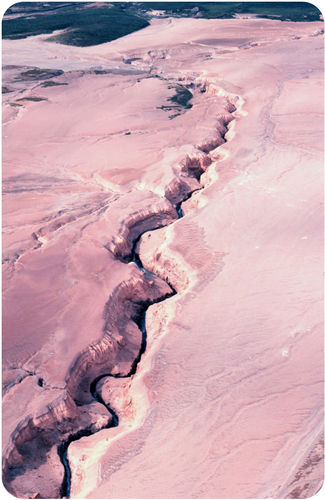
Figure 2. Water erodes the land surface in Alaska’s Valley of Ten Thousand Smokes.
Streams carry huge amounts of sediment (figure 3). The more energy the water has, the larger the particle it can carry.
A rushing river on a steep slope might be able to carry boulders. As this stream slows down, it no longer has the energy to carry large sediments and will drop them.
A slower moving stream will only carry smaller particles.
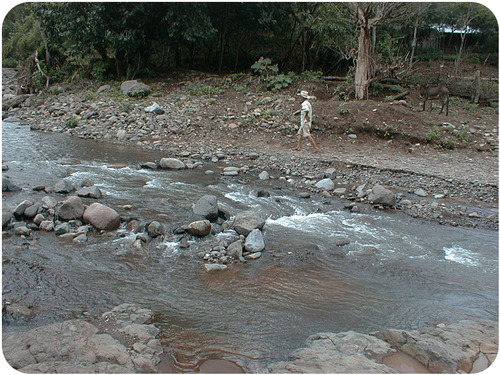
Figure 3. A river dumps sediments along its bed and on its banks.
Sediments are deposited on beaches and deserts, at the bottom of oceans, and in lakes, ponds, rivers, marshes, and swamps. Avalanches drop large piles of sediment. Glaciers leave large piles of sediments, too. Wind can only transport sand and smaller particles. The type of sediment that is deposited will determine the type of sedimentary rock that can form. Different colors of sedimentary rock are determined by the environment where they are deposited. Red rocks form where oxygen is present. Darker sediments form when the environment is oxygen poor.
Sedimentary Rock Formation
Accumulated sediments harden into rock by lithification, as illustrated in figure 4.

Figure 4. This cliff is made of sandstone. Sands were deposited and then lithified.
Two important steps are needed for sediments to lithify.
- Sediments are squeezed together by the weight of overlying sediments on top of them. This is called compaction. Cemented, non-organic sediments become clastic rocks. If organic material is included, they are called bioclastic rocks. If ONLY biologic material is present (e.g. coal), then rocks are called organic.
- Fluids fill in the spaces between the loose particles of sediment and crystallize to create a rock by cementation.
The sediment size in clastic sedimentary rocks varies greatly (see table 1).
| Table 1. Sedimentary rock sizes and features | ||
|---|---|---|
| Rock | Sediment Size | Other Features |
| Conglomerate | Large | Rounded |
| Breccia | Large | Angular |
| Sandstone | Sand-sized | |
| Siltstone | Silt-sized, smaller than sand | |
| Shale | Clay-sized, smallest | |
When sediments settle out of calmer water, they form horizontal layers. One layer is deposited first, and another layer is deposited on top of it. So each layer is younger than the layer beneath it. When the sediments harden, the layers are preserved.
Sedimentary rocks formed by the crystallization of chemical precipitates are called chemical sedimentary rocks, also known as evaporites. As discussed in the “Earth’s Minerals” chapter, dissolved ions in fluids precipitate out of the fluid and settle out, just like the halite in figure 5.
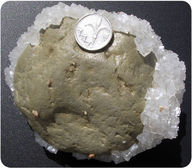
Figure 5. The evaporite, halite, on a cobble from the Dead Sea, Israel.
Often salt formation process happens in shallow closed or restricted basins where the rate of evaporation is higher than the rate of precipitation. The salt forms when water level drops. It can also happen near deserts or beaches. See historical information about Salt March in India (1930): https://www.history.com/topics/india/salt-march
Biochemical sedimentary rocks form in the ocean or a salt lake from living creatures, like shells. Living creatures remove ions, such as calcium, magnesium, and potassium, from the water to make shells or soft tissue. When the organism dies, it sinks to the ocean floor to become a biochemical sediment, which may then become compacted and cemented into solid rock (figure 6).
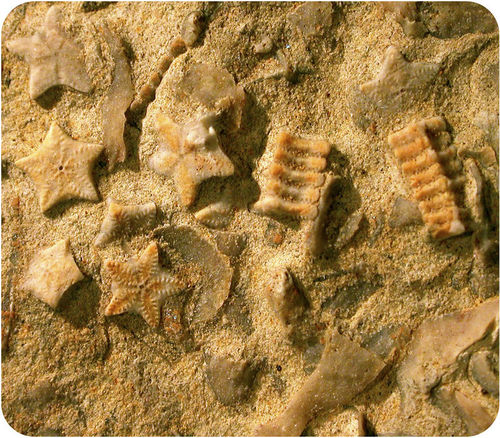
CLASTIC SEDIMENTARY ROCKS:

BIOCHEMICAL SEDIMENTARY ROCKS:



Source: https://slidetodoc.com/unit-3-rock-types-sedimentary-rocks-basic-rock/
ORGANIC SEDIMENTARY ROCKS:

Source: https://openpress.usask.ca/physicalgeology/chapter/9-3-organic-sedimentary-rocks-2/
CHEMICAL SEDIMENTARY ROCKS:
Minerals precipitate as the shallow water that has flooded the bottom of Death Valley evaporates.
Source: https://www.windows2universe.org/earth/geology/sed_chemical.html&edu=high&lang=en
Sedimentary Rock Textures
In clastic sediments the sedimentary texture includes the grain size, rounding, and sorting of the grains, all of which are related to what happened to the sediment during the weathering-to-deposition process. Because the processes that lead to the formation of chemical sedimentary rocks do not involve the weather-to-deposition process, there is no widely agreed-upon texture scheme that applies to chemical sedimentary rocks.
Clastic Textures
Clastic sedimentary textures are described in terms of the size of the sediment grains, how round they are, and how well they are sorted.
Grain Characteristics
The diameter or width of a clastic sediment grain determines its grain size. Specific ranges of grain size have specific names.
- Gravel is an overall name for large sediment grain size, which includes boulder, cobble, and pebble.
- Sand includes sediment grains ranging in size from 2mm to 0.625 mm.
- Silt is the name of a sediment grain that range in size from 0.625 mm to 0.0039 mm.
- Mud is the smallest grain size and is also known as clay. It is important to distinguish the grain size called clay from the mineral called clay. Clay sized grains are too small to see individually without the aid of a microscope.
Rounding
Clastic sediment grains can be round, angular, or in-between (subangular or subrounded). Breccia is a clastic sedimentary rock that by definition consists largely of angular grains of pebble size or larger. Conglomerate, another sedimentary rock, consists largely of rounded grains of pebble size or larger. The schematic diagram below shows classes of rounding, from the left: angular, subangular, subrounded, rounded. Not shown are very angular and well-rounded, which are less common.
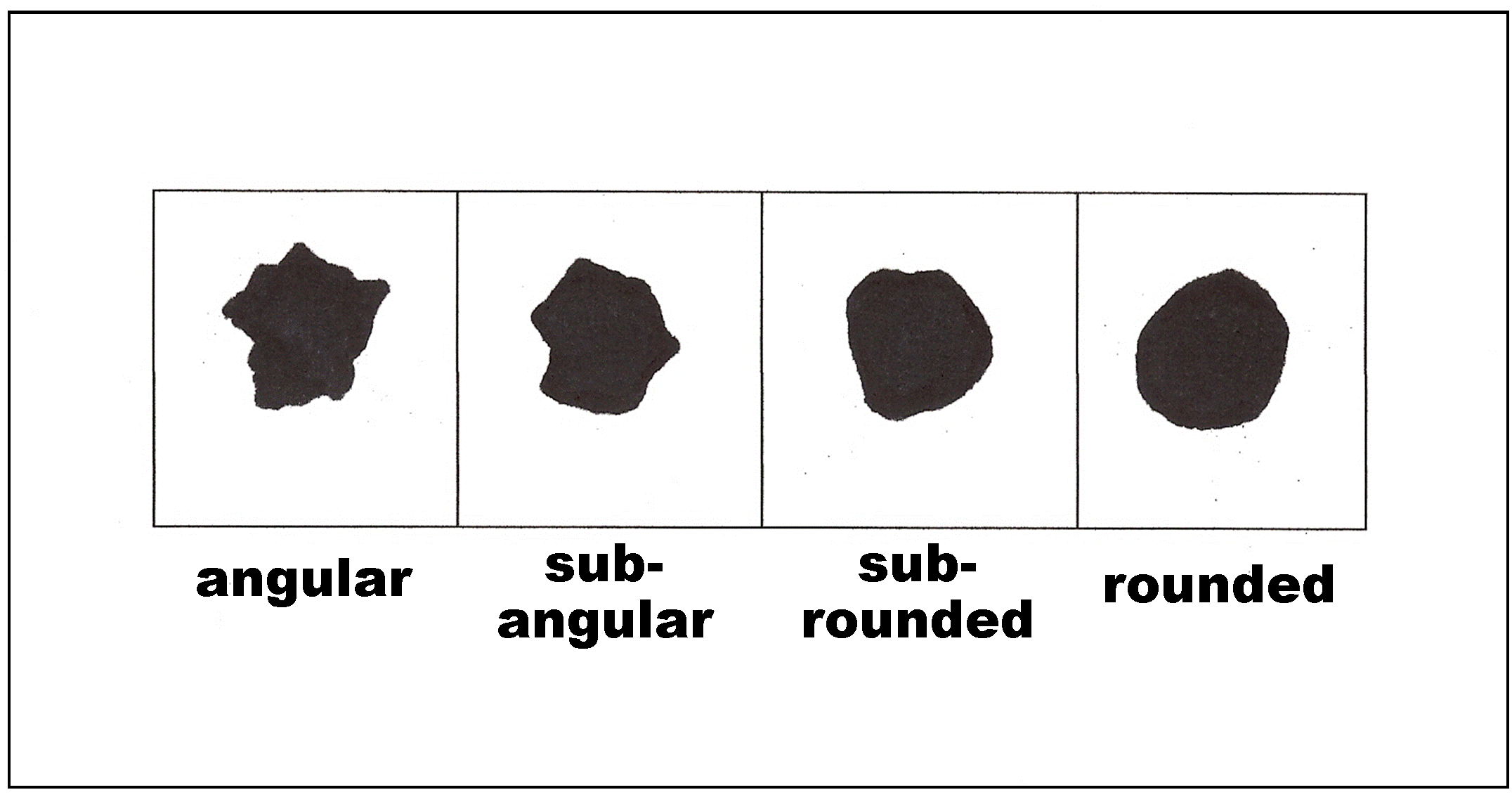
The further from the source particle travel, the smaller they became. For example, in streams in the mountains you will find pebbles, boulders, but down in the valley you will see sand, silt, mud.
Sorting
The extent to which all the grains are the same size is known as sorting. If all the grains are the same size, they are well sorted. Some sandstones are well sorted, and some are not. Most conglomerates are poorly sorted, and consist of a mixture of grain sizes ranging from sand to pebble. The schematic diagrams below represent poorly-sorted, moderately-sorted, and well-sorted sediments.
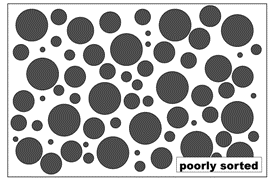
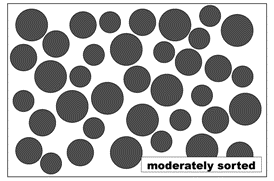
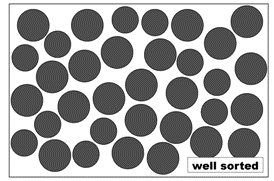
Other Aspects of Texture
Other aspects of clastic sedimentary texture include the packing of the grains, the porosity of the rock, and the hardness of the rock as a whole.
The packing of the grains applies only to poorly sorted sediments in which the finer clasts form a matrix around the coarser clasts. If the large grains are touching each other, the packing is said to be clast-supported. If the coarse grains are separate and not touching each other, with the finer-grained sediment between them, the packing is said to be matrix-supported.
The porosity of a rock or sediment is the amount of empty space between the grains of sediment.
The hardness of the rock refers to how easily it breaks apart. Shale is harder than claystone, for example.
How to Identify Sedimentary Rocks
Clastic Textures
The common names of clastic sedimentary rocks—conglomerate, sandstone, siltstone, and shale—are based solely on grain size. However, there are more precise names within these broader categories that are based on clastic sediment features other than grain size. Breccia is a clastic sedimentary rock distinguished from conglomerate by the angularity of its clasts.
A clastic sedimentary rock simply made of sand-sized grains qualifies as sandstone, regardless of what minerals the grains are made of. More complete names for various sandstones are based on their mineral composition. Some sandstones are made almost entirely of quartz. Sandstone made virtually entirely of quartz is called arenite. Other sandstones have lots of feldspar mixed with quartz. Such sandstones are called arkose. Other sandstones are a mixture of feldspar, quartz, clay, and small fragments of “lithics,” dark-appearing minerals and rock fragments, which represent mineralogically immature sediments. Such sandstones are technically known as lithic wackes, although geologists often call them by their old name, graywackes, and the rocks are sometimes informally described as “dirty sandstones.”
In using the sedimentary rock classification table that accompanies this section, you will see that the clastic sedimentary rocks are classified on the basis of grain size. Sandstones are rocks made of sand-size grains. Shale is layered sedimentary rock made of fine mud-size grains too small to see with the naked eye.
Chemical Textures
The key to naming chemical sedimentary rocks is the minerals from which they are made. For example, all limestones consist mostly of the mineral calcite. Rock salt is made of salt minerals such as halite. Gypsum rock is made of the mineral gypsum. Chalcedony is made of microcrystalline quartz, quartz grains so tiny that they cannot be distinguished even with a standard optical microscope.
Table 2 shows some common types of sedimentary rocks.
Biochemical Textures
Biochemical sedimentary rocks form with the help of past life. This can be in the form of fossils, shells or plant remains. For example, coal is made up of plant remains.
| Table 2. Common Sedimentary Rocks | ||
|---|---|---|
| Picture | Rock Name | Type of Sedimentary Rock |
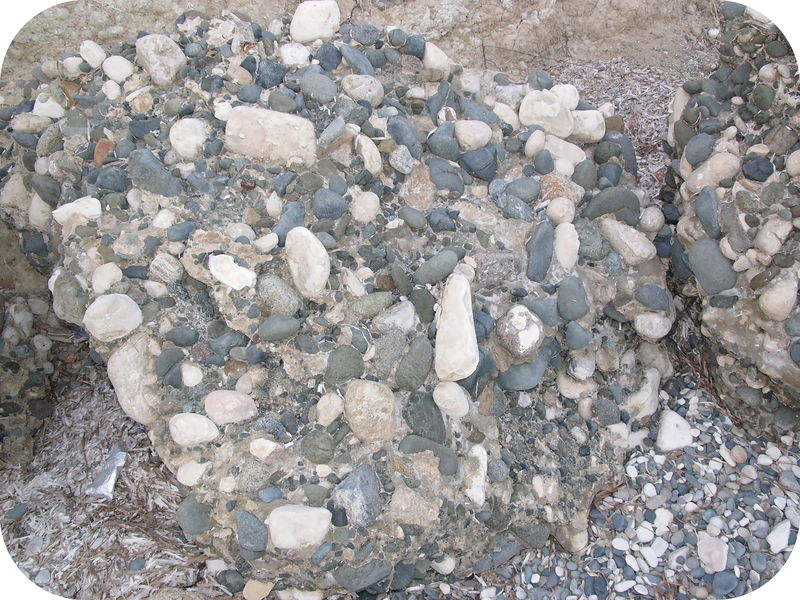 |
Conglomerate | Clastic (fragments of non-organic sediments) |
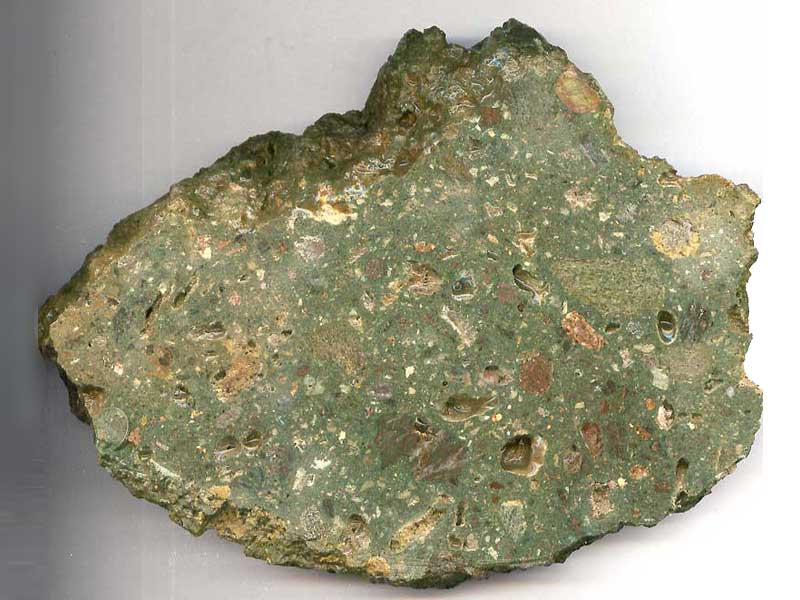 |
Breccia | Clastic |
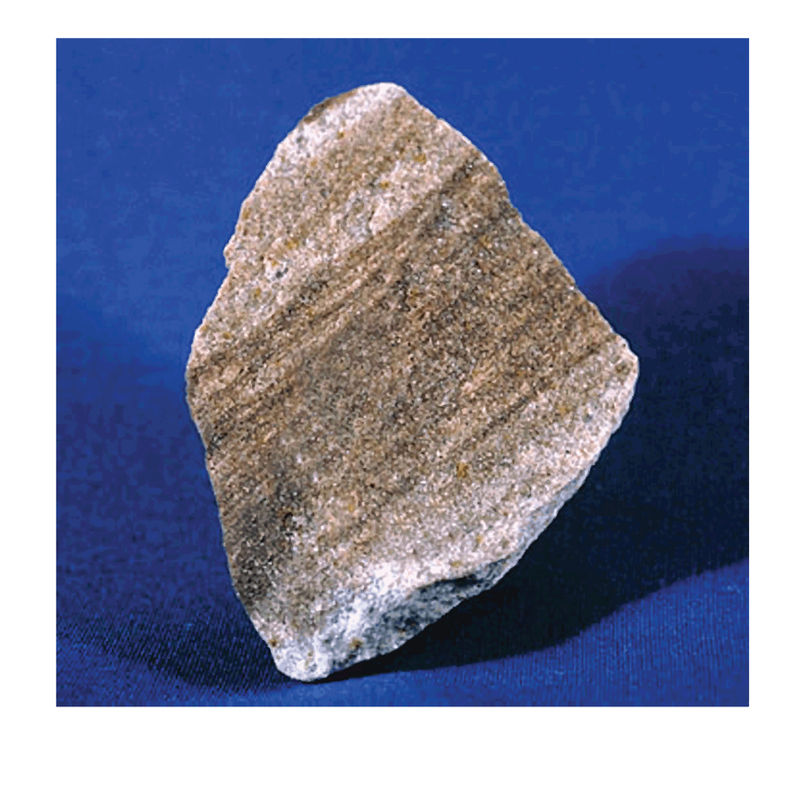 |
Sandstone | Clastic |
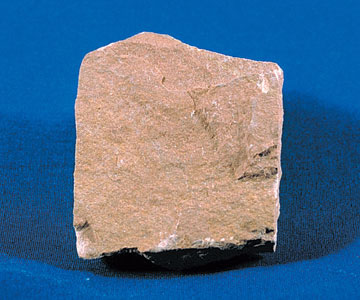 |
Siltstone | Clastic |
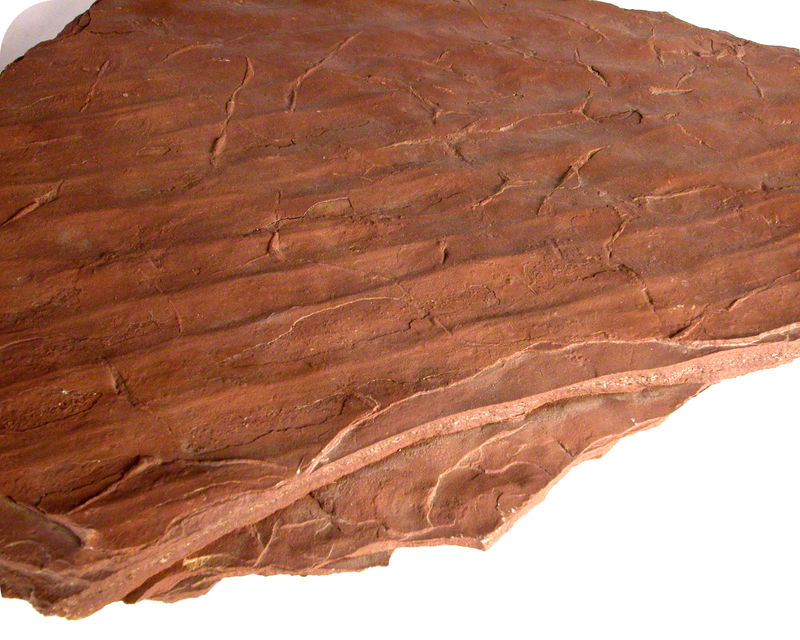 |
Shale | Clastic |
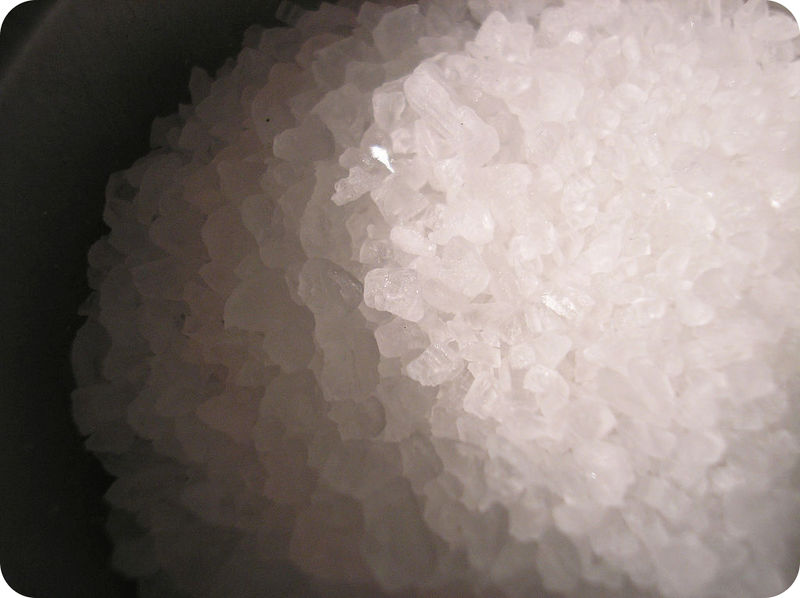 |
Rock Salt | Chemical precipitate |
 |
Gypsum | Chemical precipitate |
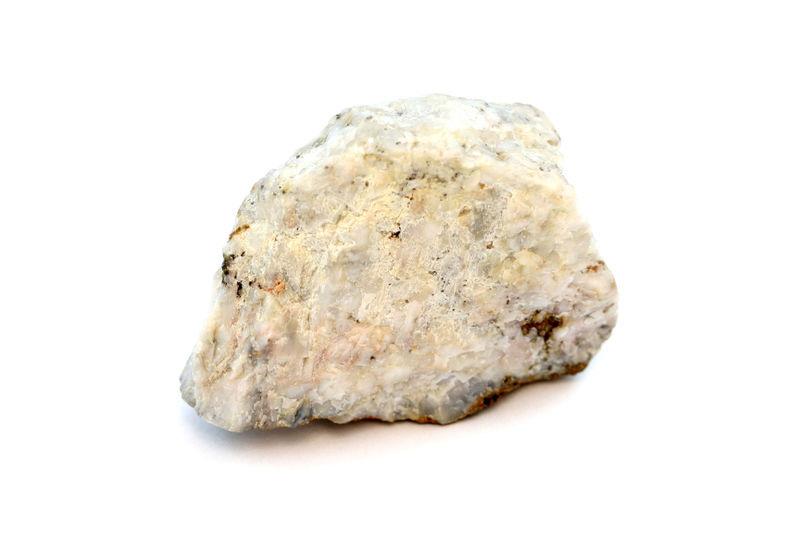 |
Dolostone | Chemical precipitate |
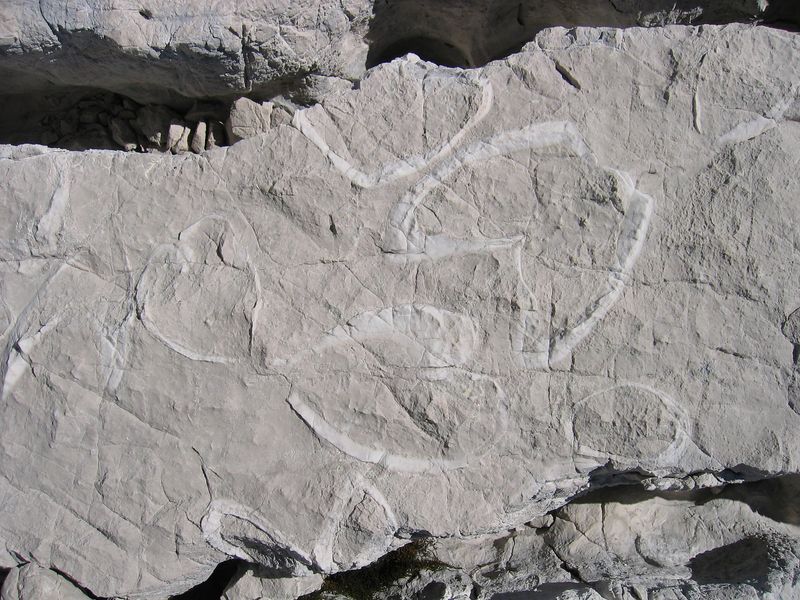 |
Limestone | Biochemical (see fossils there) |
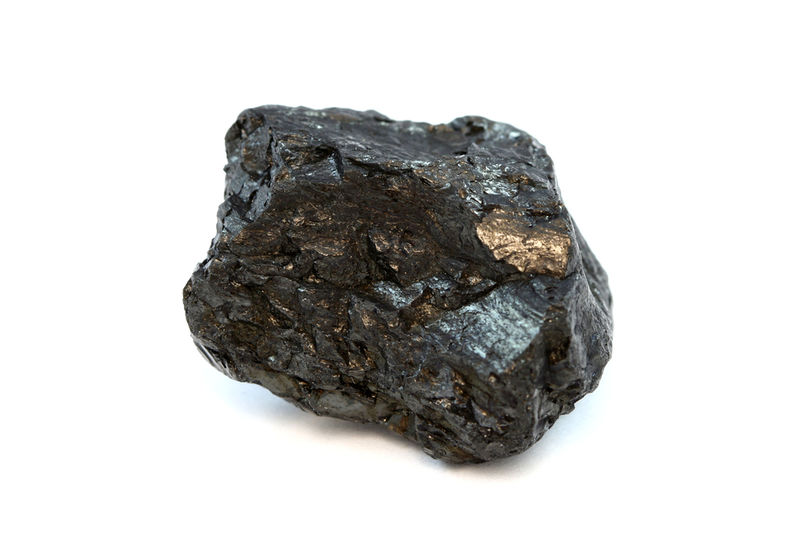 |
Coal | Biochemical |
Sedimentary Rock Classification
| Clastic Sedimentary Rocks | |||
|---|---|---|---|
| Grain Size | Rounding | Sorting | Rock Name |
| gravel coarse
(> 2 mm) |
angular | poorly | breccia |
| rounded | poorly | conglomerate | |
| sand medium
(0.0625–2 mm) |
variable | variable | sandstone |
| rounded to subangular | well to moderately | quartz arenite— >90% quartz | |
| subrounded to angular | well to moderately | arkose— >25% feldspar | |
| subangular to angular | moderately to poorly | graywacke—high % lithics, clay matrix | |
| silt fine
(0.004–0.0625 mm) |
variable | well | siltstone |
| clay extra fine
(< 0.004 mm) |
not visible | well | shale—breaks along bedding planes |
| mudstone—lacks bedding planes | |||
| claystone—pure mineral clay, very soft | |||
| Chemical & Biochemical Sedimentary Rocks | |||
| Mineral | Distinguishing Characteristics | Rock Name | Common Depositional Environment |
| calcite | softer than glass, reacts to HCl | limestone | warm shallow ocean |
| calcite | visible fossils, softer than glass, reacts to HCl | fossiliferous limestone (biochemical) | warm shallow ocean |
| dolomite | white to pink, softer than glass, reacts to HCl only when powdered | dolostone | saline lagoon |
| calcite | gray or brown, porous, reacts to HCl | travertine | evaporated spring or cave water |
| calcite | white, powdery, reacts to HCl | chalk | warm shallow ocean |
| microscopic quartz | conchoidal fracture | chert | deep ocean floor |
| microscopic quartz | red, conchoidal fracture | jasper | deep ocean floor |
| microscopic quartz | black, conchoidal fracture | flint | nodules in limestone |
| microscopic quartz | translucent, layered, conchoidal fracture | agate | nodules in volcanic rocks |
| microscopic quartz | white, powdery | diatomite | lakes in volcanic environments |
| carbon | black, soft, low density | coal (biochemical) | heavily vegetated swamp |
| halite | tastes like salt, cubic crystals and cleavage | rock salt | evaporating water body |
| gypsum | softer than fingernail | gypsum rock | evaporating water body |
Uses of Sedimentary Rocks
Sedimentary rocks are used as building stones, although they are not as hard as igneous or metamorphic rocks.
Sedimentary rocks are used in construction. Sand and gravel are used to make concrete; they are also used in asphalt.
Many economically valuable resources come from sedimentary rocks. Iron ore and aluminum are two examples.
